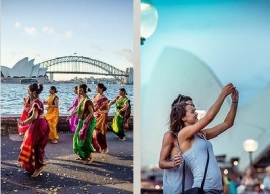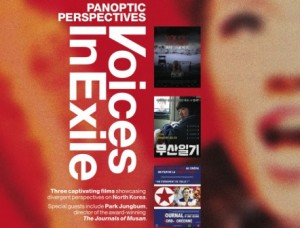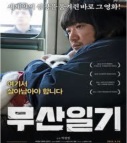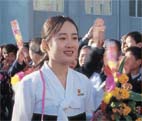 (ABC Radio’s Tell Me Straight’s Yasmin Parry and Will Ockenden, 30 Septemebr 2017) Imagine a squad of thousands of military soldiers flying helicopters and planes through the night towards North Korea with one job — to assassinate the leader, Kim Jong-un.
(ABC Radio’s Tell Me Straight’s Yasmin Parry and Will Ockenden, 30 Septemebr 2017) Imagine a squad of thousands of military soldiers flying helicopters and planes through the night towards North Korea with one job — to assassinate the leader, Kim Jong-un.
It sounds like the plot of a film, or a Twitter threat from US President Donald Trump, but it’s a legitimate South Korean defence strategy.
This month, the South Korean Defence Minister, Song Young-moo, announced a special forces squad, called the Decapitation Unit, would be reformed by the end of the year.
Reformed? Yep, this is the second iteration of a Kill Kim assassination squad.
A motley band of misfits were trained back in the 1970s to take out Mr Kim’s grandfather, but why try again when last time everything went horrifically wrong?
Miscreant hit squad
In 1971, the first Decapitation Unit was formed with the intention of marching north to slit the throat of Kim Il-sung, the then North Korean leader.
Like the plot of the Suicide Squad comic book series, the group was made up of former criminals and thugs plucked from the streets of Seoul.
The government gave them an irresistible offer — the promise of a new life and a clean slate if they completed their mission.
According to Leonid Petrov, a Korea expert from the Australian National University, the special unit was isolated for years on an island called Silmido.
The squad of misfits trained in gruelling conditions, some dying along the way.
But when the time grew close for them to complete their task, the South Korean government called the whole thing off.
“The whole mission was aborted because, well, they’re not professionals,” Dr Petrov said.
“They were still criminals, and they had no idea what’s going on in North Korea so they were doomed to failure.”
The government realised there was no way men from the South could infiltrate the North undetected.
“They already speak completely different dialects, they don’t understand each other, they don’t travel, they don’t visit each other,” Dr Petrov said.
“At that time the satellites wouldn’t provide them with maps and Google Earth didn’t exist at that time.
“They would immediately be identified, arrested, and potentially used in the counter-propaganda war against South Korea.”
Weapons who knew too much
But in their years of training, the men had become trained assassins, and the South Korean rulers feared they would turn rogue.
Dr Petrov said the South Korean guards on the island began slaughtering the agents one after another.
“They were shot and eliminated because they knew too much,” Dr Petrov said.
But when the South Korean guerrillas realised their fate, they rebelled.
The men turned on their guards and sailed a boat back to mainland South Korea.
They landed on the peninsula, hijacked a bus and drove towards the capital, but at one of the road blocks they were annihilated.
For many years, South Koreans knew nothing of the assassination plans and the ensuing chaos, which was severely embarrassing for the then South Korean dictatorship.
It was not until South Korea’s democratisation in the 1990s, and the release of the 2003 film Silmido, that people become widely aware of the story.
“Nobody knew that the South Koreans were doing exactly the same thing that North Koreans would do,” Dr Petrov said.
“But they’re Koreans — they’re brothers and sisters — they live in the constant fear of the resumption of the hostilities and it’s a slow motion civil war.”
Getting the gang back together
Despite everything that went wrong with the Decapitation Unit in the 1970s, the South Korean Government now plans to recreate it.
The South Korean Defence Minister said 2,000 to 4,000 soldiers would be assembled by year’s end and the military was already “retooling” helicopters and transport planes to penetrate North Korean airspace at night.
It sounds like a daring plan, but Dr Petrov said it was nothing but propaganda.
“Everyone in South Korea understands that the South Koreans cannot do much or anything successful in terms of deposing or dethroning the regime of Kim Jong-un, simply because they don’t know how it works. It’s a black box,” he said.
“When South Korean parliamentarians were asked why on Earth they decided to come up with this plan, which didn’t work before, they simply said it was the intention to scare the North Korean regime, because North Koreans have nuclear weapons that South Koreans don’t.”
One of the ways South Korea can respond is with a propaganda campaign, setting up a Decapitation Unit so the North Korean leadership would have to live in constant fear.
Assassination doomed to fail
According to Dr Petrov, there are numerous reasons a hit on Mr Kim by the South Koreans would be impossible.
“It is a fantasy, it’s science fiction. Mission impossible,” he said.
He said the first problem was very few people knew where the North Korean leader was at any given moment.
“Kim Jong-un lives like his father and his grandfather — underground in numerous palaces which are linked by underground tunnel highways.
“He periodically pops up on launching pads to oversee the rockets, have a photo session, meet with peasants and workers and then disappear again,” Dr Petrov said.
Second, the North Korean regime is a “perfect dictatorship”, with many layers of defence.
“The system in North Korea is designed to protect the leadership in such a way that even their own security apparatus people don’t know where the leader is,” Dr Petrov said.
“When they drive the car with high-ranking leaders, there’s a system of block posts that stop the car and change the driver, so that every driver doesn’t know where the journey is going to stop.”
The third reason is the South Korean army is unprepared to take on such a task.
“The South Korean army counts 675,000 people, of which most are conscripts, which means they’re mama’s boys, university students who are not prepared to sacrifice their life for some ideological conflict which has been going on in Korea for decades,” Dr Petrov said.
Special units do exist and are well trained, but it is unlikely they would be effective on enemy territory given they know little about the security infrastructure underground, he said.
“Maybe a dozen of highly trained spies can cross the border, can infiltrate, but again it will be some comical situations when they wouldn’t know the reality of North Korean life. They will be immediately identified, embarrassed,” Dr Petrov said.
“They’re like aliens visiting the Earth. Hello Earthlings!”
With an attempt on Mr Kim’s life unlikely, the leader’s lifestyle is likely to kill him first, Dr Petrov said.
“Kim Jong-un is more likely to die of an overdose of expensive Cognac or cheese or obesity or high blood pressure, but not from a South Korean bullet,” he said.
—
You can listed to the original ABC Radio podcast of this interview here…
—




















 by Ian Timberlake (AFP, Pyongyang, 01 Oct. 2010)
by Ian Timberlake (AFP, Pyongyang, 01 Oct. 2010)
You must be logged in to post a comment.